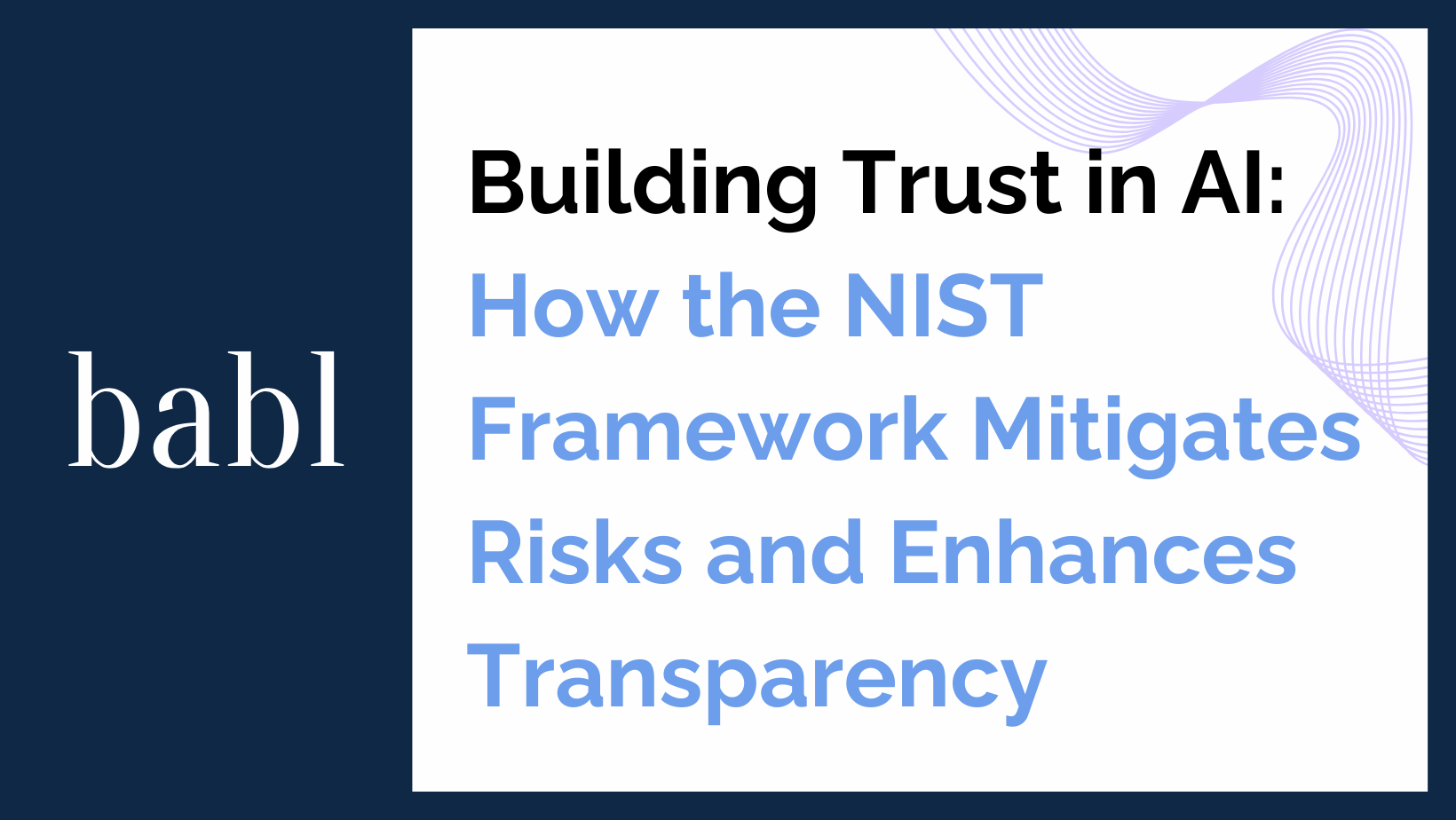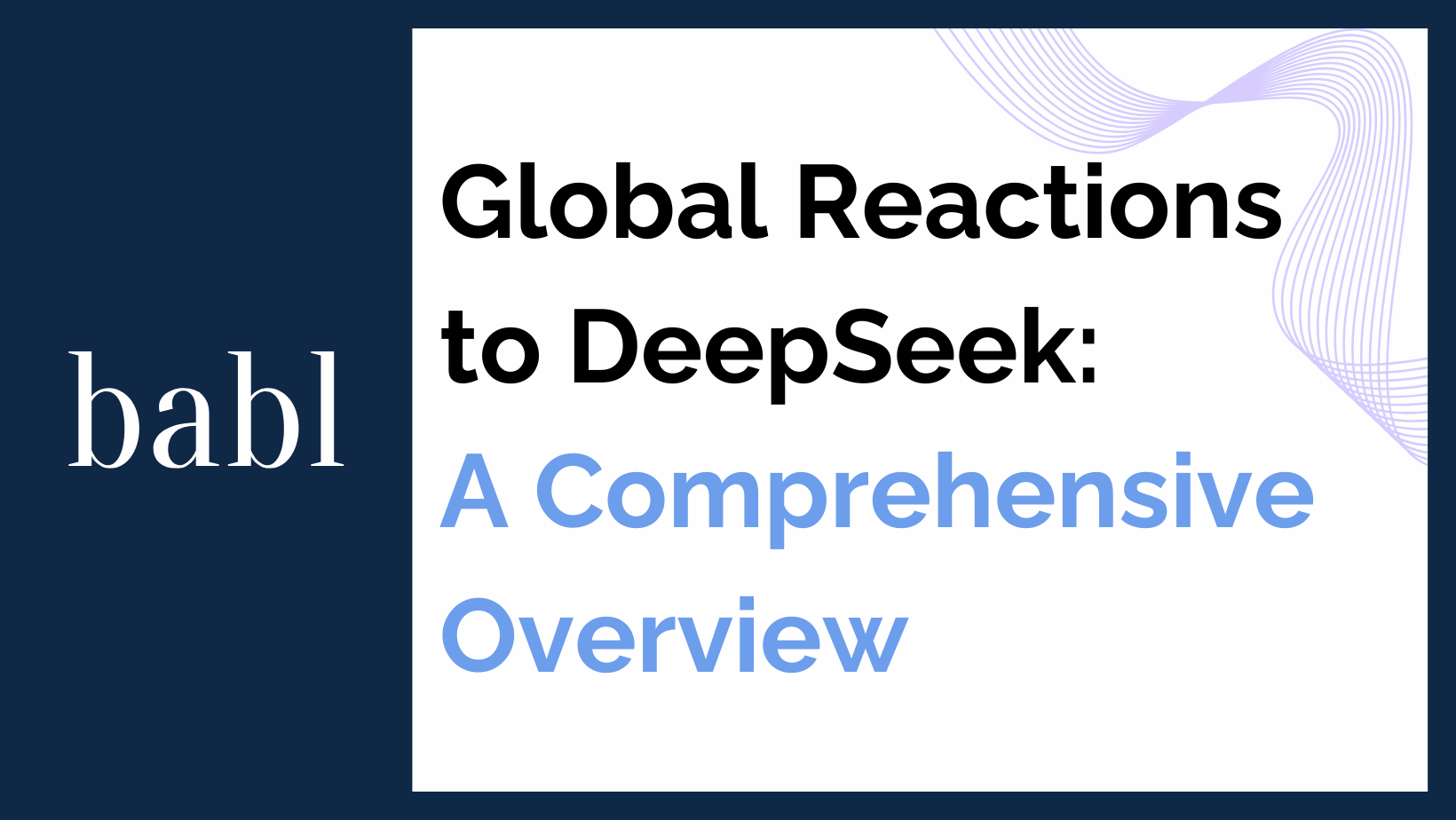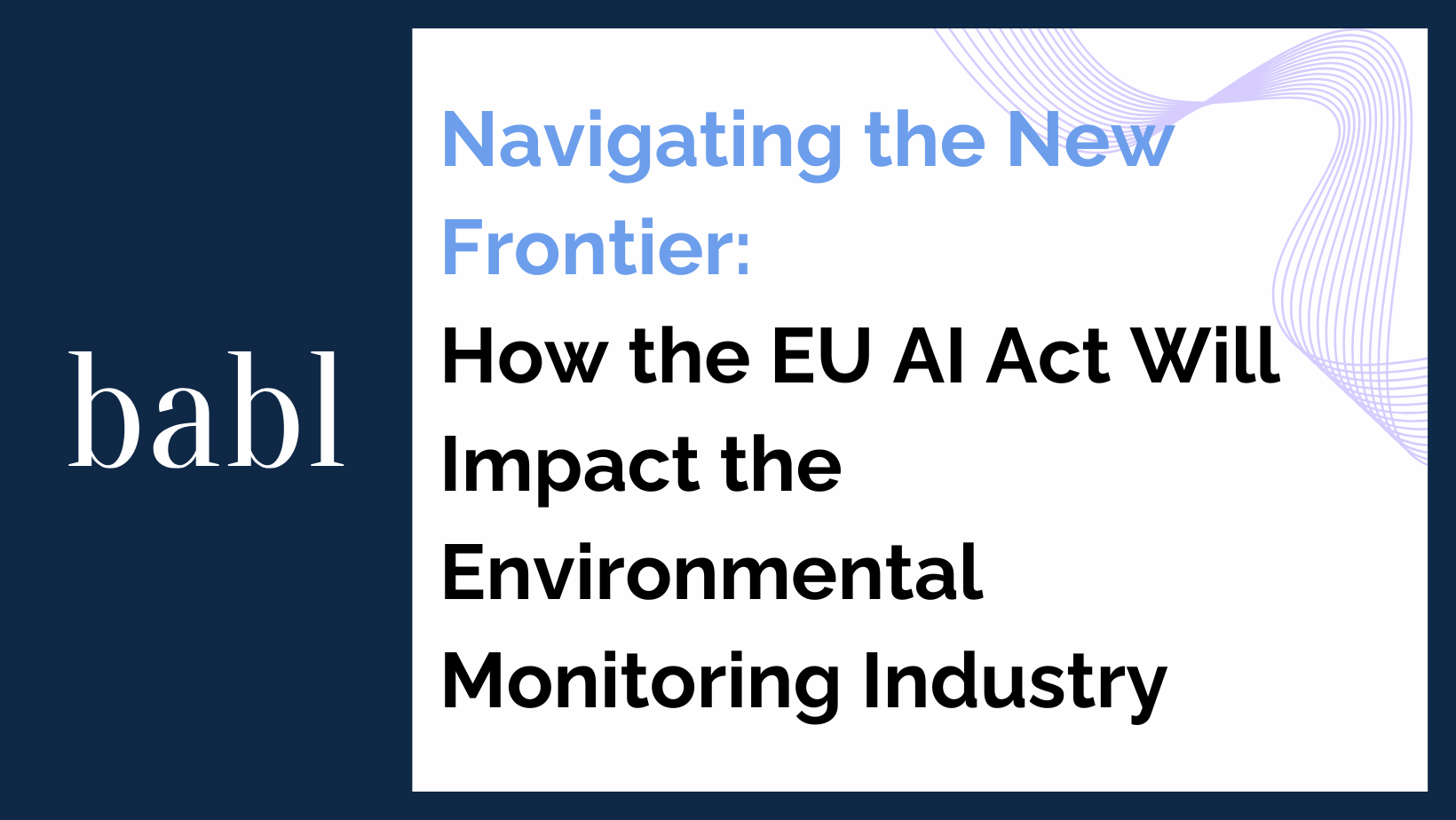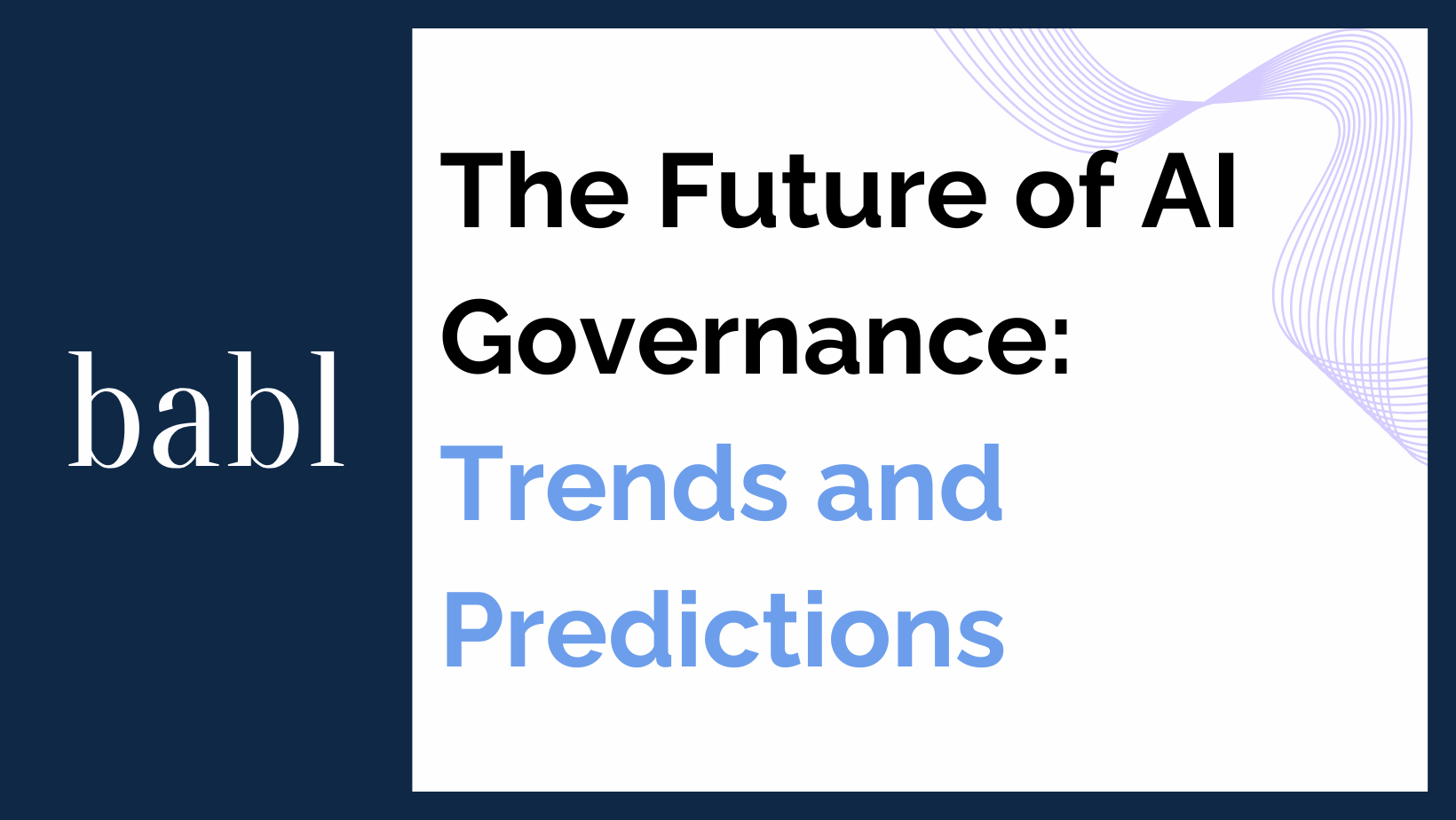In today’s landscape, businesses increasingly turn to frameworks like the NIST AI Risk Management Framework to navigate ethical risks and build trust in artificial intelligence (AI) deployments. Designed as a flexible guide, the NIST framework focuses on mitigating risks and enhancing transparency, which is especially vital for AI applications in sensitive areas like hiring algorithms and public health systems. Adhering to NIST’s guidelines not only ensures AI aligns with best practices but also fosters public confidence.
The NIST AI Risk Management Framework, introduced to support the responsible development and deployment of AI, is invaluable to organizations aiming to balance innovation with ethical and operational safeguards. Its four functions—govern, map, measure, and manage—allow organizations to develop AI strategies that prioritize accountability, accuracy, and fairness.
Understanding NIST’s Role in the AI Ecosystem
The NIST framework is built around flexible principles that help organizations responsibly implement AI technologies. Particularly within sectors like automated hiring and healthcare, the potential for algorithmic bias and unethical decision-making looms large. Following NIST’s guidelines can reduce such risks, ensuring AI systems operate transparently and with accountability to stakeholders.
While regulatory bodies develop formal compliance requirements, the NIST framework provides a proactive foundation for organizations. This approach is critical as global and domestic regulations shift. For instance, the framework’s focus on bias evaluation and human oversight aligns with emerging regulations. Much like New York City’s Local Law 144 on hiring algorithms, which mandates bias audits for AI hiring tools.
Key Elements of the NIST AI Risk Management Framework
The NIST framework establishes a proactive approach to risk management and align well with the principles of transparency and fairness. For each of these functions, NIST provides practical steps that organizations can apply to mitigate risk effectively:
- Govern: Establishing a governance framework ensures all AI-related activities align with ethical and legal standards. This includes defining accountability structures, setting goals for fairness, and developing policies to oversee AI’s impact. This pillar is vital in sectors like hiring, where clear oversight is essential to prevent discrimination.
- Map: By identifying and understanding the specific AI risks an organization faces, mapping provides a comprehensive view of how AI impacts stakeholders. In hiring, this might mean evaluating how an algorithm filters candidates and determining whether those methods introduce bias. Public health applications might focus on the implications of AI’s decision-making accuracy for patient outcomes.
- Measure: Accurate and ongoing measurement of AI performance is crucial to identifying potential biases or inaccuracies. NIST emphasizes the importance of measurable metrics to gauge fairness, reliability, and other key factors, which can be challenging for AI systems in areas like hiring.
- Manage: NIST advises on managing risks across an AI system’s life cycle, from development to deployment and beyond. Effective risk management is particularly crucial in sensitive contexts, where a biased algorithm can profoundly impact a person’s employment or healthcare outcomes.
Together, these elements create a strong framework for organizations to address AI-related risks proactively, fostering trust among users and regulatory bodies alike.
Mitigating Bias in Hiring Algorithms
One of the most visible applications of the NIST framework is in hiring algorithms, where ethical concerns about bias are particularly prevalent. AI tools in hiring are often tasked with filtering candidates based on skills and experience, but unintended biases can creep into the selection process if not carefully monitored. By adhering to NIST’s principles, employers can mitigate the risk of bias, maintain compliance with relevant laws, and ultimately foster a more equitable hiring process.
- Bias Audits and Transparency: The NIST framework encourages organizations to audit their AI tools for bias and ensure transparency in decision-making processes. Regular audits can detect patterns where the algorithm may favor or disfavor certain groups. For instance, a hiring algorithm might inadvertently favor candidates with characteristics that align with previous hires, reinforcing historical biases. Transparency in how algorithms weigh candidate qualifications is crucial for building trust with applicants.
- Continuous Monitoring and Data Evaluation: Hiring algorithms should undergo continuous monitoring to detect shifts in data trends that could indicate emerging biases. For instance, a tool might show an initial lack of bias but later introduce disparities as hiring needs change. By implementing real-time monitoring, employers can stay vigilant, adjusting algorithms as needed to uphold fairness.
Promoting Trust in AI for Public Health
In public health, trust is a fundamental requirement for AI adoption, as these technologies are often tasked with making high-stakes decisions affecting patient outcomes. Adopting the NIST framework helps healthcare organizations mitigate risks related to privacy, accuracy, and accountability, which are critical when implementing AI in such a sensitive field.
- Accountability and Human Oversight: One of NIST’s key recommendations is to establish clear lines of accountability and maintain human oversight, especially in AI systems that may impact health outcomes. Human oversight acts as a safeguard, allowing healthcare professionals to intervene if an AI’s recommendation appears inaccurate or biased. For instance, AI used to assess patient eligibility for treatment must be subject to human review to avoid unfairly denying care.
- Ensuring Accuracy through Rigorous Testing: In healthcare, inaccuracies can have severe consequences. The NIST framework encourages rigorous testing to ensure that AI systems perform consistently and accurately. Regular testing helps ensure that AI tools remain reliable, making them safer to use in critical settings.
Ensuring Compliance Across Regulatory Landscapes
With a global increase in AI regulations, adhering to the NIST framework can assist organizations in maintaining compliance across jurisdictions. This is particularly relevant for companies that must navigate various regulatory requirements around transparency, accountability, and data handling.
- Anticipating Regulatory Changes: By incorporating NIST’s framework, organizations can prepare for regulations before they become law, particularly in jurisdictions with stringent AI oversight. NIST’s principles align well with the EU’s AI regulations, which emphasize accountability, fairness, and transparency. Adopting these practices early can simplify compliance and reduce the risk of penalties.
- Standardized Auditing Practices: NIST’s guidelines provide a standardized approach to audits, which is increasingly becoming a requirement in AI-heavy industries. By adopting these standards, companies can streamline compliance processes, enabling them to quickly adapt to regulations as they emerge. Consistent auditing practices also make it easier to demonstrate compliance to stakeholders, further bolstering trust.
Practical Steps for Implementing NIST’s Framework
For organizations considering the NIST framework, several practical steps can help ensure effective implementation, ultimately reducing ethical risks and enhancing trust:
- Develop a Compliance Roadmap: Start by mapping out the key areas of the NIST framework that apply to your organization, focusing on high-risk applications like hiring or healthcare.
- Integrate Human Oversight: Ensure that human reviewers are involved in decision points where ethical risks are significant, such as hiring decisions or patient care recommendations.
- Create Transparent Documentation: Detailed documentation on how algorithms make decisions is essential, particularly for regulatory compliance and user trust. This is vital in hiring contexts, where transparency can alleviate concerns about fairness.
- Conduct Regular Audits: Regular audits should evaluate both algorithmic fairness and overall performance, ensuring that AI systems align with ethical standards and do not introduce unintended biases.
- Educate and Train Employees: Provide training for employees involved in AI oversight to ensure they understand ethical risks and compliance requirements.
Looking Ahead: The Evolving Role of NIST in AI Regulation
Also, as AI technologies advance, frameworks like NIST’s will continue to play a pivotal role in guiding ethical development. While the framework currently focuses on high-level guidelines, future iterations may provide industry-specific recommendations. Which helps organizations more easily tailor practices to their unique needs. Also, given the increasing public and regulatory scrutiny around AI, businesses that proactively adopt frameworks like NIST will be better positioned to adapt to new compliance challenges.
Conclusion
The NIST AI Risk Management Framework offers a roadmap for organizations. It aims to implement responsible AI practices, helping mitigate risks and build public trust. By prioritizing transparency, accountability, and evaluation, companies can not only ensure compliance with regulations but also prepare for future regulations. Also, as AI technology continues to evolve, frameworks like NIST’s will remain essential for promoting a culture of ethical AI, empowering businesses to innovate responsibly while safeguarding public trust.
Need Help?
You might be wondering how to navigate AI regulations around the world. Therefore, don’t hesitate to reach out to BABL AI. Hence, their Audit Experts are ready to provide valuable assistance while answering your questions and concerns.





